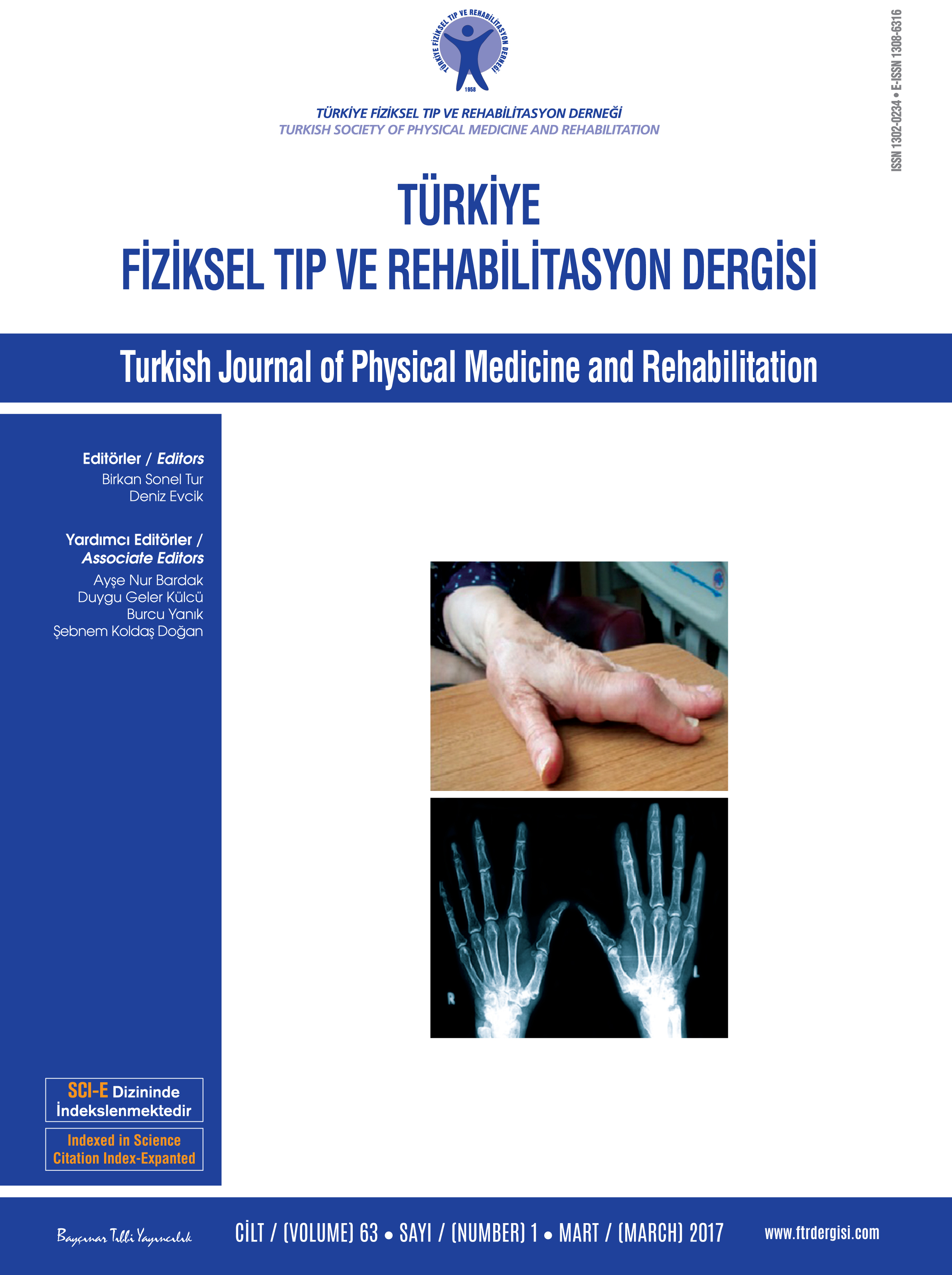Blinded and stimulator guided comparison of suprascapular nerve block in hemiplegic shoulder pain: a pilot study
2 Department of Physical Medicine and Rehabilitation, Fatih Sultan Mehmet Training and Research Hospital, İstanbul, Turkey
3 Department of Algology, Fatih Sultan Mehmet Training and Research Hospital, İstanbul, Turkey DOI : 10.5606/tftrd.2017.80034 Objectives: This study aims to compare the superiority of different suprascapular nerve block (SSNB) application methods on hemiplegic shoulder pain (HSP), in a blinded and stimulator guided manner.
Patients and methods: Twenty-six stroke patients (19 males, 7 females; mean age 61.0±9.4 years; range 53 to 76 years) meeting the enrollment criteria, were included in this study between September 2014 and November 2014. Patients were randomly divided into two equal groups. Patients in group A received blinded SSNB and patients in group B received stimulator guided SSNB. Range of motion (ROM) (by goniometer) and pain levels (by visual analog scale-VAS) were assessed. Evaluations were made before, one hour after and one week after SSNBs.
Results: In each group, VAS pain scores significantly decreased over time (p<0.0001) and a significant increase in terms of flexion and abduction ROM angles (group A: p=0.002 and p=0.010; group B: p=0.004 and p=0.012, respectively) was observed. In addition, internal rotation ROM angles were found to have increased in group B (p=0.036). There were no significant differences in ROM and VAS one hour and one-week change scores between the two groups (p>0.05).
Conclusion: Both blinded or stimulator guided suprascapular nerve block techniques were safe and effective for pain relief in hemiplegic shoulder pain management. None of the injection techniques was superior to the other.
Keywords : Blinded; hemiplegic shoulder pain; stimulator guided; suprascapular nerve block

















